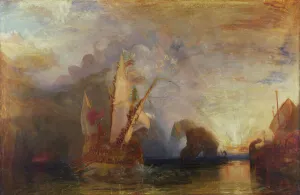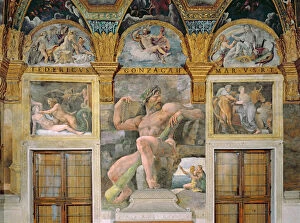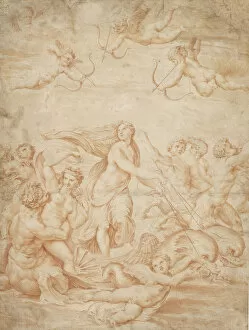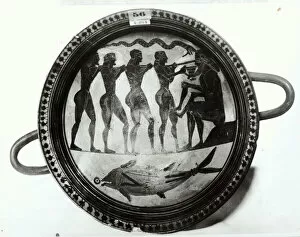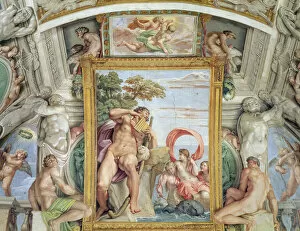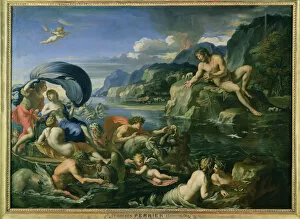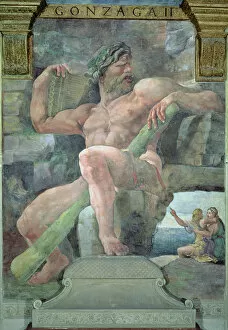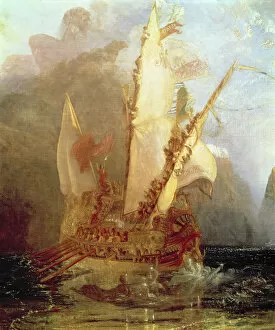Polypheme Collection
"Polypheme: A Mythological Tale of Love, Betrayal, and Revenge" In the captivating painting "Ulysses Deriding Polyphemus
All Professionally Made to Order for Quick Shipping
"Polypheme: A Mythological Tale of Love, Betrayal, and Revenge" In the captivating painting "Ulysses Deriding Polyphemus, " we witness the cunning hero mocking the one-eyed Cyclops, a scene filled with tension and defiance. Meanwhile, in "Olympia seduced by Jupiter, " we are transported to a moment of forbidden passion between the king of gods and a mortal woman. The fresco "Polyphemus guarding Acis and Galatea" portrays the jealous giant keeping watch over his beloved nymphs, highlighting his possessiveness and desire for control. A fascinating myth unfolds in "Pasiphae entering the cow constructed by Daedalus. " This peculiar tale reveals Pasiphae's unconventional love for a bull as she enters its disguise created by Daedalus himself. "The Triumph of Galatea" enchants us with its delicate red chalk strokes on paper, capturing the beauty and grace of this sea nymph who triumphs over adversity. In contrast, "Polyphemus attacking sailors in their boat" depicts a terrifying encounter at sea as desperate sailors face off against an enraged Cyclops. The intensity is palpable in this dramatic oil painting. A striking ceramic cup showcases Ulysses blinding Polyphemus while his companions look on. This powerful image immortalizes their daring escape from captivity. Roman mosaic art comes alive with an early 4th-century depiction of Polyphemus as he looms large among intricate patterns. It reminds us of ancient craftsmanship that still captivates today. Within Carracci Hall's grandeur lies a detail featuring Polyphemus and Galatea—a testament to their enduring presence within classical mythology. "Frieze representing scenes from the Quests of Ulysses" presents another black-and-white photo showcasing Ulysses' resourcefulness as he blinds Polyphemus—an act crucial to his journey home. "The Children's Hour.

